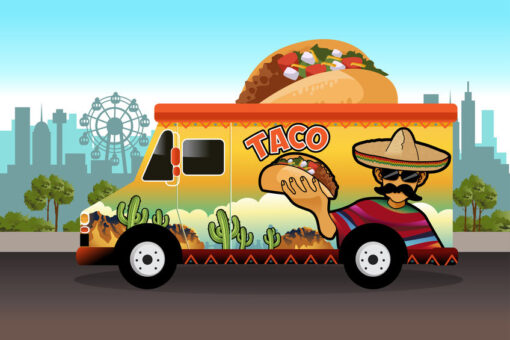If you’re a student loan borrower, you have likely heard about the student loan forgiveness plan announced by the Biden-Harris Administration. It’s got so much media attention and received so many reactions and opinions over the past few weeks. In this post we’ll try to make sense of what this policy really means. Let’s start with some fact-checking!
How will student loan forgiveness work?
Part 1. Final extension of the student loan repayment pause
The Administration has already extended the student loan repayment pause a few times. This happened because of the economic challenges created by the pandemic. The pause will be extended a final time through December 31, 2022, with payments resuming in January 2023. This should ease the transition back to repayment and prevent unnecessary defaults.
Part 2. Providing targeted debt relief to low- and middle-income families
Borrowers who meet the income cap requirements will qualify for cancellation of federal student loan debt.
Here is how it works:
Win more scholarships with less effort
Simplify and focus your application process with the one-stop platform for vetted scholarships.
Check for scholarships- Pell Grant recipients qualify for up to $20,000 in debt cancellation. Those who did not receive a Pell Grant will qualify for up to $10,000 in debt relief.
- To be eligible, your annual income must be less than $125,000 for individuals, or $250,000 for married couples or heads of households.
- Only federal student loans are eligible for debt forgiveness. Private loans and loans issued by state governments are not eligible. If you consolidated your Federal Family Education Loan (FFEL) or Federal Perkins Loan into the federal Direct Loans program prior to September 29, 2022, those consolidated loans will be eligible. FFEL and Federal Perkins Loans not consolidated prior to that date will not be eligible for student loan forgiveness.
- You may be eligible to have all your student loans forgiven through the Public Service Loan Forgiveness (PSLF) program. This is if you work for nonprofits, the military, or federal, state, Tribal, or local government.

Part 3. Making the student loan system more manageable for current and future borrowers
Unfortunately, new loans taken out after July 1, 2022, are not eligible for this relief plan. But, the Administration is proposing better terms to ease the loan repayment for future borrowers. The idea is to create a new income-driven repayment plan. The plan will reduce monthly payments for lower- and middle-income borrowers.
According to this proposal:
- You wouldn’t have to pay more than 5% of your discretionary income monthly on undergraduate loans (down from the current 10%).
- The amount of your income protected from repayment would be raised. This means that you won’t have to make a monthly payment if your hourly wage is less than $15.
- If your loan balances are $12,000 or less, they would be forgiven after 10 years of payments (instead of 20 years).
- As long as you make your monthly payments, your unpaid monthly interest would be covered, so that your loan balance won’t grow.
Do I qualify for federal student loan forgiveness?
Only federal student loans are eligible for forgiveness. Federal student loans make up roughly 93% of all student loans today. The remaining 7% of student loans are private loans issued by banks and state agencies. They are not eligible for the federal student debt forgiveness plan.
If, when you filed your income tax return in 2020 or 2021, you earned under $125,000 when filing as an individual, OR if you earned under $250,000 when filing as married or a head of household, you can qualify for up to $10,000 in federal student loan forgiveness.
If you have received a Pell Grant, you are eligible to have another $10,000 in federal student loans forgiven, totalling up to $20,000 in debt relief.
You’re eligible even if you didn’t get your degree, since you still have to repay the loans.

Are federal graduate student loans eligible for forgiveness?
Yes! Graduate student debt is eligible for forgiveness. This is true as long as you have federal student loans, and not private student loans. And remember – only loans taken out before July 01, 2022 will qualify.
I’m a parent with Parent Plus Loans that were used to pay for my child’s college education. Are these loans eligible for forgiveness?
Yes! Parents who took out Parent PLUS Loans before July 01, 2022 will qualify for debt forgiveness, if they meet the income caps.
Note that, if you have a combination of student loan debt that includes your own student loans and Parent PLUS loans, your maximum forgiveness is still the same. If you received a Pell Grant, you are eligible for $20,000 in total loan forgiveness. lf you did not receive a Pell Grant, you are eligible for $10,000 in total debt relief.
How to apply for student loan forgiveness?
The application for forgiveness is now open. It’s simple and only takes a minute to complete It’s available in English and Spanish, and you do not need to input detailed income information. You can apply here.
Will I have to pay tax on my forgiven student loans?
Student loans that are forgiven are exempt from federal income tax. This is due to a provision that prevents taxation on student loans forgiven through 2025. Each state will determine whether to impose their own taxes. Some states have already made their decision, while others have yet to determine whether to tax forgiven loans. Check here for the status about your own state.
Can you get a refund on student loan payments made during the COVID-19 pandemic?
You can get a refund for any federal student loan payment made during the payment pause, starting from March 13, 2020. Contact your loan servicer to request that your payment be refunded as soon as possible. It can take up to a few weeks or months.
Note that any refunded payments will be applied towards the total loan forgiveness you are qualified for. So for example, if you were not a Pell Grant recipient and meet income cap guidelines, you are eligible for $10,000 in loan forgiveness. If you made $2,000 in loan payments after March 13, 2020, then you would be eligible to have that $2,000 refunded. You would also be eligible for another $8,000 in loan forgiveness.

Are you eligible for forgiveness if your loan is in default?
All defaulted borrowers are eligible for forgiveness. The Department of Education decided to give all borrowers a fresh start at repayment without any past due balance.
Will student loan forgiveness actually happen?
As of right now, student loan forgiveness is expected to move forward; however, some lawsuits have been filed by those who don’t support the plan. This means that the process might take a bit longer, and it is also possible that some elements of the plan may change. You can stay on top of any developments by signing up for updates from the Department of Education at https://www.ed.gov/subscriptions.
Will my new student loan be eligible for forgiveness?
Only federal student loans taken out BEFORE July 01, 2022 are eligible for student loan forgiveness. Loans taken out for the 2022 – 2023 school year or future years will not be eligible for forgiveness. The best way to reduce your college cost, and potentially graduate debt-free is to apply for scholarships, not loans.
Takeaway
This student loan forgiveness policy may not be perfect. But if you are one of the millions of qualifying borrowers, you’ll receive much needed relief. Debt forgiveness gives you a chance to get on with your life. You can achieve milestones such as getting married, buying a house, or saving for retirement. It also allows you to spend more, invest, or open a business.
For current or future students, it may be disappointing to know that new student loans will not qualify for debt relief. But you do still have many options to reduce your college costs:
- Apply for need-based federal and state grant aid through the FAFSA. The application opens on October 1st.
- Choose a more affordable college. Don’t get caught-up in the allure of attending a more expensive university. Employers don’t care which school you attend. They are more interested in knowing you completed a degree or certificate program relevant to the career you are pursuing.
- Work full-time during breaks, and part-time during the school year to “cashflow-your-way” through college.
- Apply for as many scholarships as you can to reduce your reliance on loans, and potentially graduate debt-free.
While taking out student loans might be a quick fix to help cover college costs, they should always be a last-resort. Paying for college with your own income, federal and state grant aid, and scholarships is a much better plan.
At ScholarshipOwl, we’ve got about $800,000 in scholarships available right now. And we make applying for scholarships quick, easy and fun! So what are you waiting for? Access our platform and start applying today!



